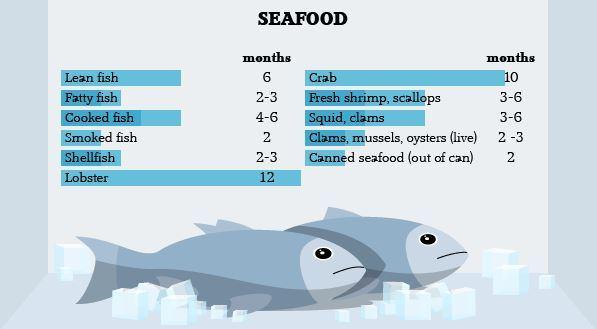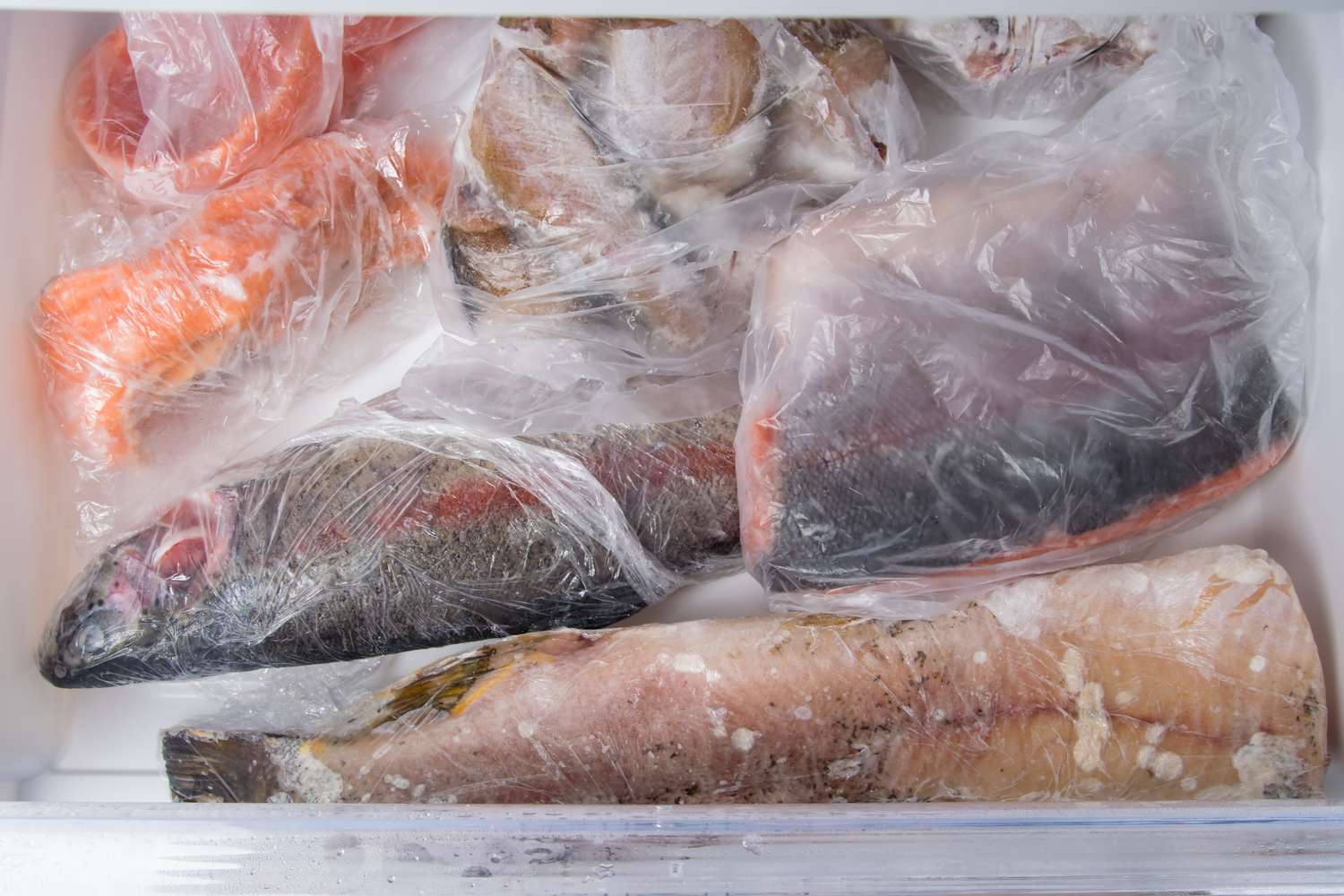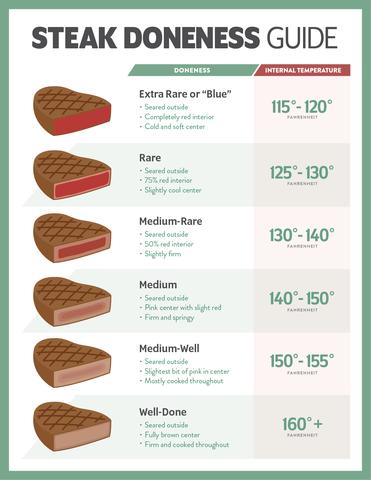
“Fresh or Fishy? Discover the Shelf Life of Fish in Your Fridge – Unveiling the Optimum Duration to Keep Seafood Fresh and Safe!”
How Long Can Fresh Fish Last In The Fridge?
The United States Department of Agriculture recommends that raw fish and seafood should only be kept in the fridge for one to two days. This is shorter than the storage time for other meats like steak or pork chops. The reason for this shorter lifespan is that fish live in colder environments, so their bacteria are accustomed to those conditions. Additionally, fish contain unsaturated fats that react with oxygen more quickly than saturated fats found in land animals, leading to a quicker onset of spoilage.
To ensure the longest possible shelf life for fresh, raw fish, it is important to store it in the coldest part of the fridge with minimal risk of contamination. This means placing it on the back of the bottom shelf. It is also recommended to cook raw fish as soon as possible after purchasing.

How Long Does Cooked Fish Last In The Fridge?
According to the United States Department of Agriculture, cooked fish can last in the fridge for three to four days. However, it is important to note that this is the maximum recommended time and it is always best to consume cooked fish as soon as possible to ensure its freshness and quality. If you have leftover cooked fish, make sure to store it properly in a sealed container or wrap it tightly in aluminum foil before placing it in the fridge.
When reheating cooked fish, it is advised to avoid using the microwave as it can dry out the fish and leave an unpleasant texture. Instead, preheat your oven to 275°F and loosely wrap the fish in aluminum foil. This will help retain moisture during reheating and prevent the fish from drying out. It is also important to ensure that your cooked fish has cooled completely before wrapping or storing it in the fridge.
How To Reheat Fish Without Ruining It
When reheating fish, it’s important to avoid drying it out and making it tough to chew. One method for reheating fish without ruining it is to preheat your oven to 275°F and loosely wrap the fish in aluminum foil. This helps keep the moisture surrounding the fish rather than allowing it to escape into the air. If the fish already looks dry or you’re concerned about moisture loss, you can add a splash of water to the foil before closing it up. Place the foil-wrapped fish in the preheated oven for approximately 15 minutes, ensuring that the internal temperature reaches 120-130°F for thorough reheating without overcooking.
Avoid reheating fish in the microwave, as this will dry it out and leave an unpleasant texture. Additionally, the microwave will create an unpleasant fishy smell in whichever area you use it. By following these steps, you can ensure that your reheated fish retains its moisture and flavor, providing a delicious meal with minimal effort.
Can You Use A Microwave To Reheat Fish?
The answer is yes, you can use a microwave to reheat fish, but it is not recommended. Reheating fish in the microwave can cause it to dry out and result in an unpleasant texture. Additionally, the microwave can leave a strong fishy smell in the area where it was reheated. Therefore, it is best to avoid using the microwave when reheating fish.
How To Prolong The Life Of Your Raw Fish

When storing fresh, raw fish in the fridge, it is important to keep it in the coldest place with the least chance of contamination. This means placing it in the back of the bottom shelf of your fridge. By doing so, you can prevent fish juices from leaking onto other foods and minimize temperature fluctuations. Additionally, it is recommended to cook raw fish as soon as possible after purchasing.
If you know that you won’t be able to cook your fresh fish within two days, it is best to freeze it. Vacuum sealing is the ideal method for preserving raw fish in the freezer, as it prevents air gaps and moisture loss. Alternatively, you can tightly wrap the fish in plastic wrap or aluminum foil before placing it in a freezer-safe bag. This helps prevent freezer burn by minimizing direct contact between the fish and air.
Avoid Freezer Burn
When it comes to preserving your raw fish in the freezer, it is important to avoid freezer burn. Freezer burn occurs when moisture is pulled from the outer layer of meat due to exposure to cold, dry air. This can result in ice crystals forming on the exterior of the fish and dehydrated meat. To prevent this, it is recommended to use a vacuum sealer or tightly wrap the fish in plastic wrap or aluminum foil before placing it into a freezer-safe bag. The goal is to eliminate any air gaps around the fish, ensuring that there is no direct contact between the fish and the air.
When you want to thaw your frozen fish, it is best to avoid using the microwave. The ideal way to thaw frozen fish is by placing it in the refrigerator overnight or in the morning before you plan on eating it. It should be placed on the bottom shelf of the fridge to prevent any escaping fish juices from contaminating other food items. If you forgot to thaw your fish in advance, you can also submerge it in cold water, making sure to replace the water every 20-30 minutes until the fish is fully thawed. Avoid using hot water as it can cause textural issues and promote bacterial growth.
Whether you have raw or cooked fish in your fridge that has been there for a few days, it’s important to know how to identify if it has spoiled. Fresh raw fish should not have much of a smell and should be wet and firm when touched. Any scent of rotting meat or a strong fishy smell is a sign that it has gone bad. Cooked fish that has spoiled will also have a rotten or ammonia-like smell and may appear slimy or mushy in texture. If the cooked fish looks dull or darker than when it was originally cooked, it is best to throw it away.
How To Thaw Frozen Fish
Thawing frozen fish properly is crucial to maintain its quality and ensure safe consumption. The best method for thawing frozen fish is to place it in the refrigerator the night before or in the morning of the day you plan to eat it. This allows the fish to slowly thaw at a safe temperature without promoting bacterial growth.
If you forgot to thaw the fish in advance, there is an alternative method. Place the frozen fish, still in its packaging, in a large bowl and submerge it in cold water. It’s important not to use hot water as it can affect the texture of the fish and increase the risk of bacteria growth. Replace the water every 20-30 minutes until the fish is fully thawed.
How Do You Know If Your Fish Has Gone Bad?

There are a few signs you can look for when checking your raw fish to make sure it’s okay to eat. Fresh fish should not have much of a smell at all. Certain types of Coldwater fish might even smell faintly of the ocean. Any scent of rotting meat or a heavy fishy smell is a bad sign. When looking at the fish, it should be the expected color. No fish should have a bluish-gray tint to it. When you touch raw fish, it should be wet and firm, not slimy or sticky.
The signs of cooked fish that have spoiled are similar to raw fish when it spoils. If your cooked fish smells rotten or like ammonia, it’s gone bad. Texturally, if your cooked fish is slimy or mushy, you need to throw it away. If the cooked fish looks different from when you put it in the fridge, primarily dulling or looking darker, it might have gone bad too.
How To Tell If Raw Fish Has Spoiled
When checking your raw fish to determine if it has spoiled, there are a few signs to look for. Fresh fish should not have much of a smell, and any scent of rotting meat or a heavy fishy smell is a bad sign. The color of the fish should be as expected, without a bluish-gray tint. When you touch the raw fish, it should feel wet and firm, not slimy or sticky.
If your raw fish exhibits any of these signs of spoilage, it is best to discard it to avoid any potential foodborne illnesses.
How To Tell If Cooked Fish Has Spoiled
When it comes to determining if cooked fish has spoiled, there are several signs to look out for. One of the most obvious indicators is a rotten or ammonia-like smell. If your cooked fish emits a strong, unpleasant odor, it is no longer safe to consume. Additionally, if the texture of the fish feels slimy or mushy instead of firm and moist, it is a clear sign that it has gone bad. Another visual cue is a change in appearance – if the cooked fish looks duller or darker than when it was initially cooked, it may have spoiled and should be discarded. It is always better to err on the side of caution and dispose of any cooked fish that shows signs of spoilage to prevent any potential foodborne illnesses.
Final Thoughts
In conclusion, it is important to know how long fish can last in the fridge to ensure its freshness and safety. The United States Department of Agriculture recommends only one to two days for raw fish and seafood, while cooked fish can last three to four days. The shorter shelf life of fish compared to other meats is due to their natural habitat in colder environments and higher content of unsaturated fats. To prolong the life of fresh, raw fish, store it in the coldest part of the fridge and cook it as soon as possible.
If you are unable to cook your fish within the recommended timeframe, freezing is a great option. Frozen raw fish can be stored for up to eight months, while cooked fish can be frozen for up to three months. When thawing frozen fish, it is best to do so in the refrigerator or by submerging it in cold water. It is important to check for signs of spoilage before consuming both raw and cooked fish, such as unusual odor or texture.
In conclusion, the shelf life of fish in the fridge varies depending on the type and freshness. Generally, fresh fish should be consumed within 1-2 days, while cooked or frozen fish can last up to 3-4 days. Proper storage and prompt consumption are crucial to maintain its quality and safety.
Learn More About Grilling
If you want to learn more about grilling, check out these other helpful resources!











